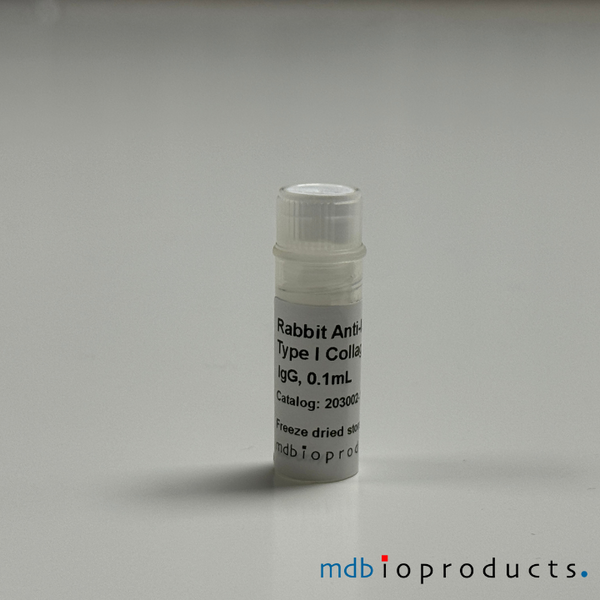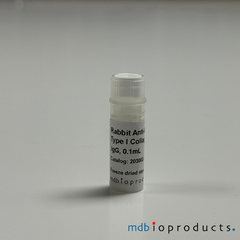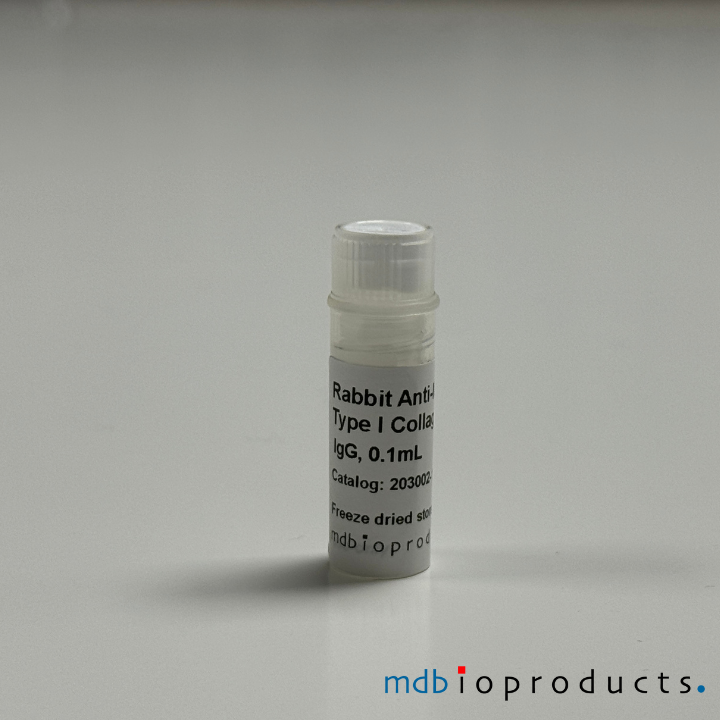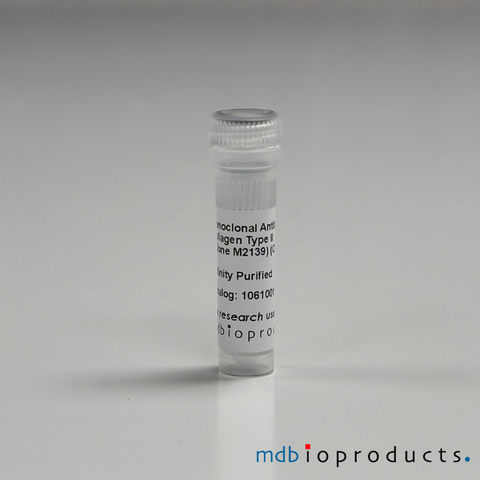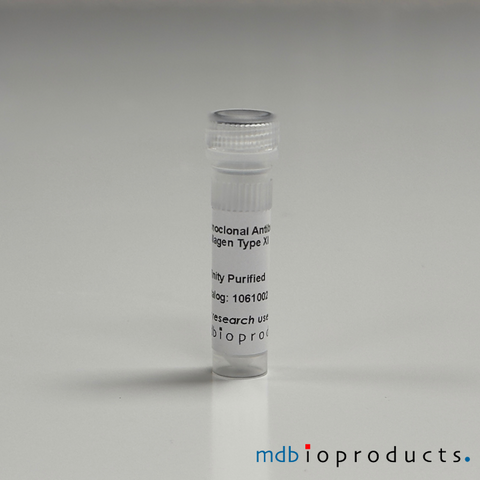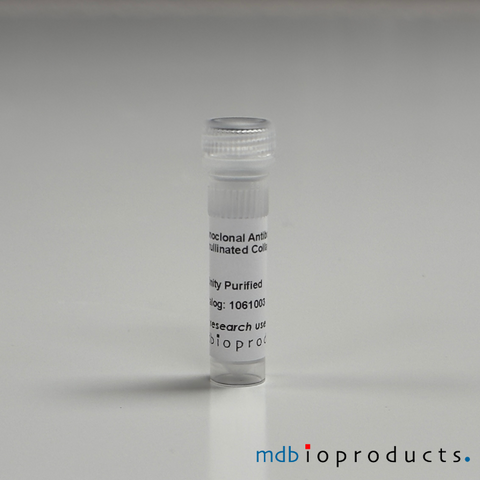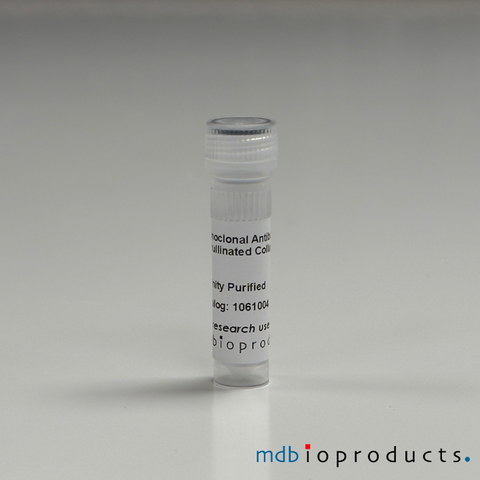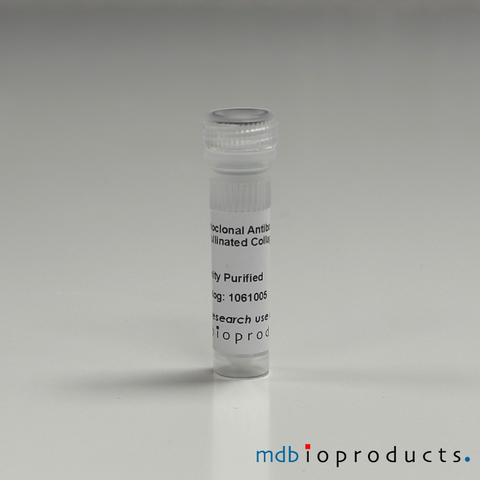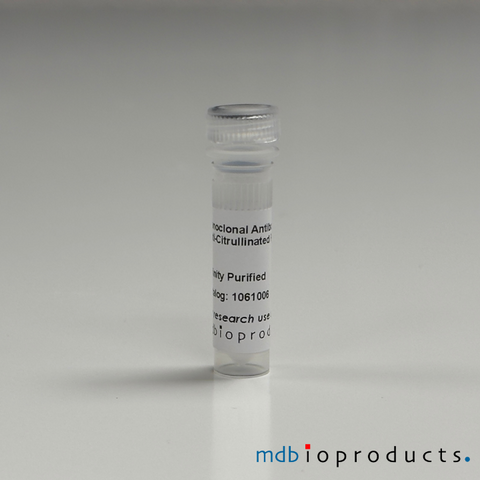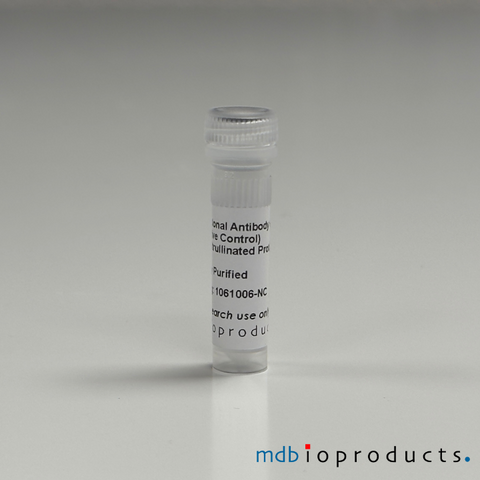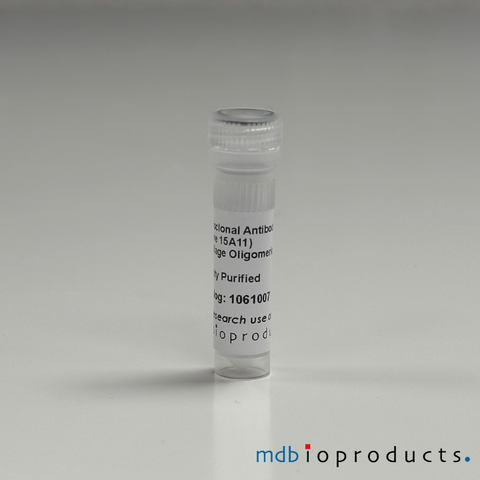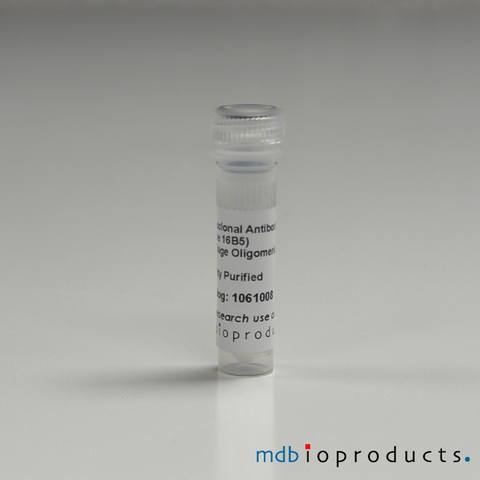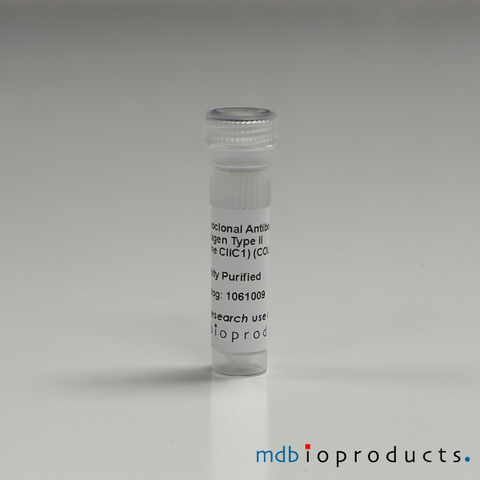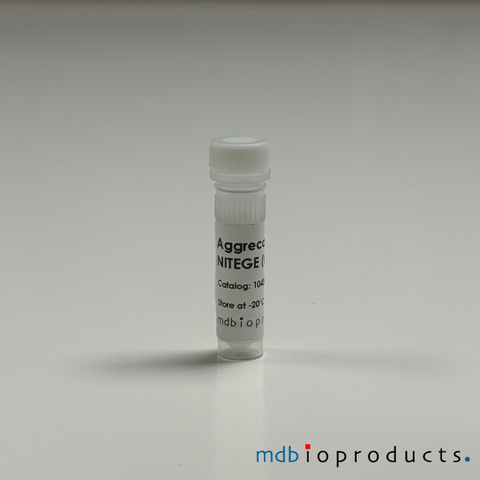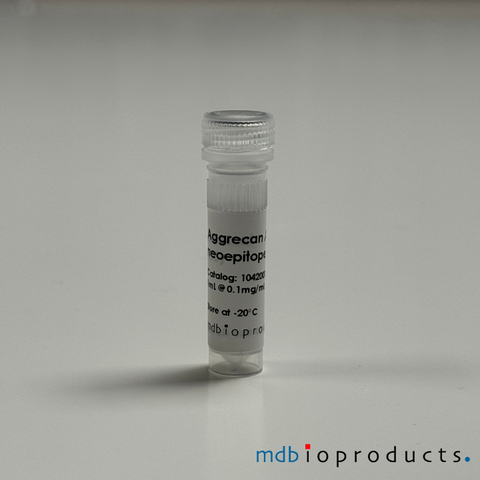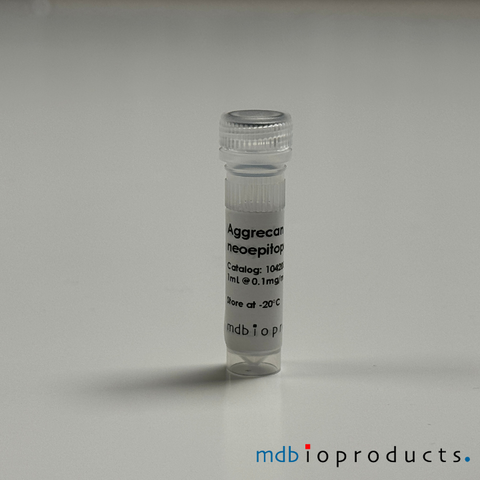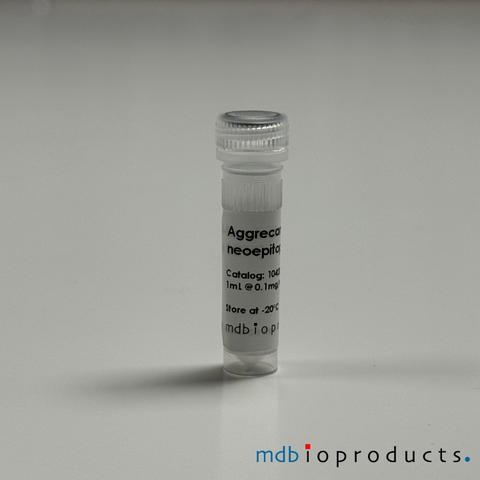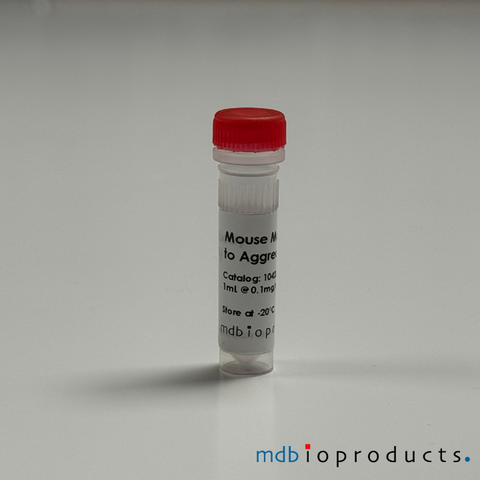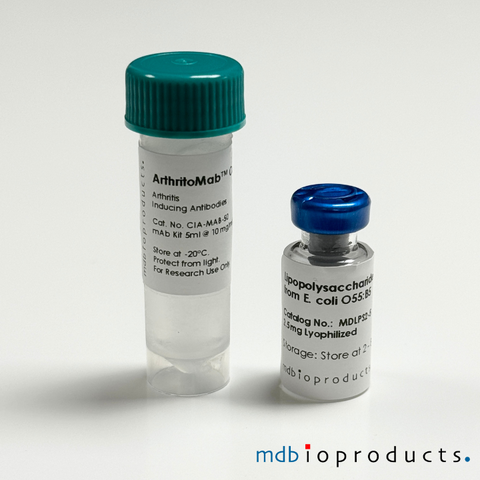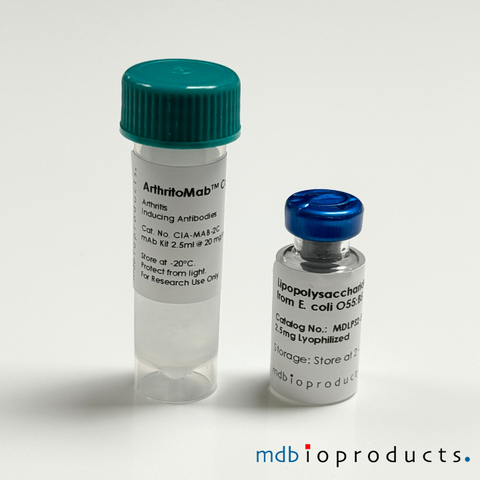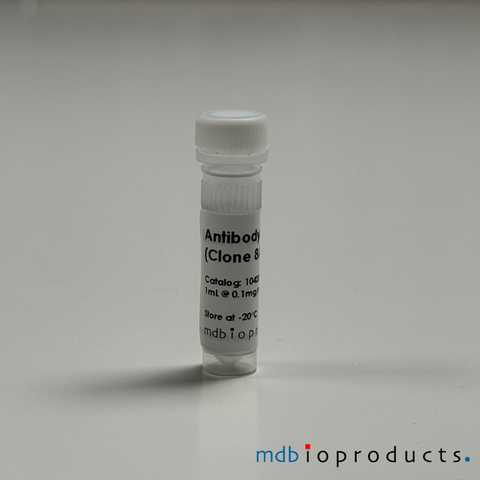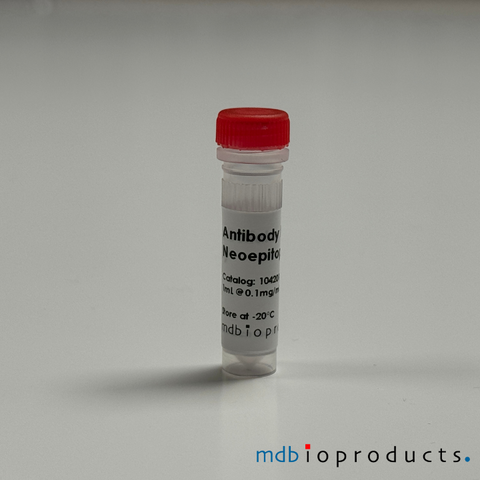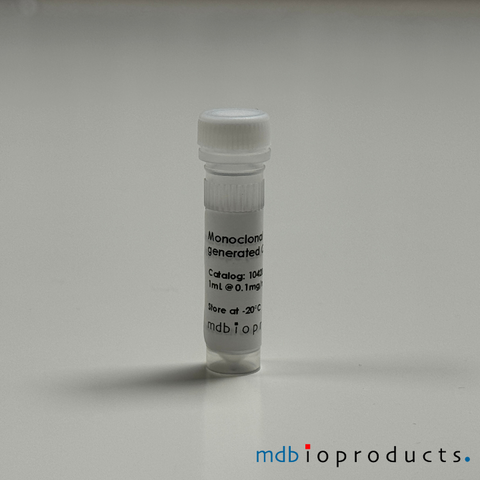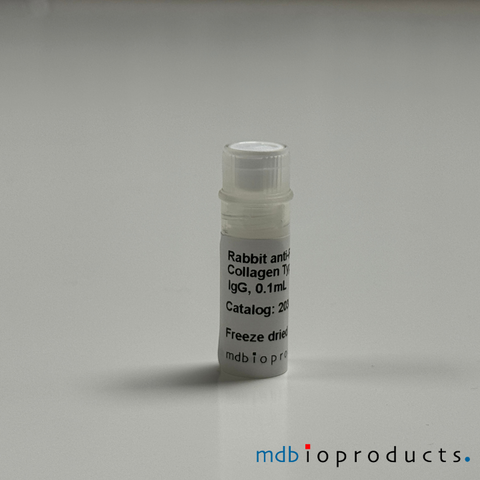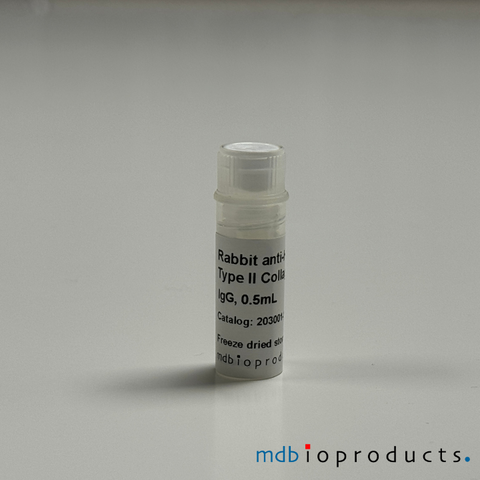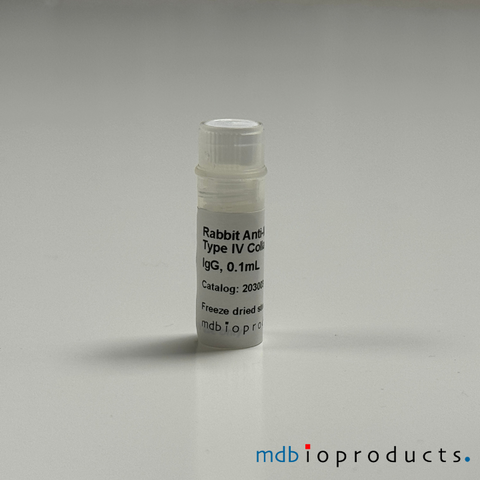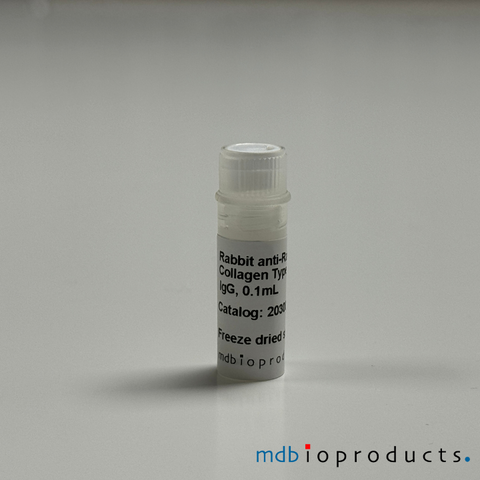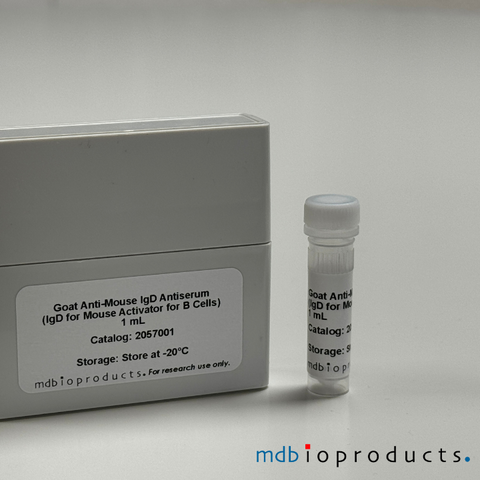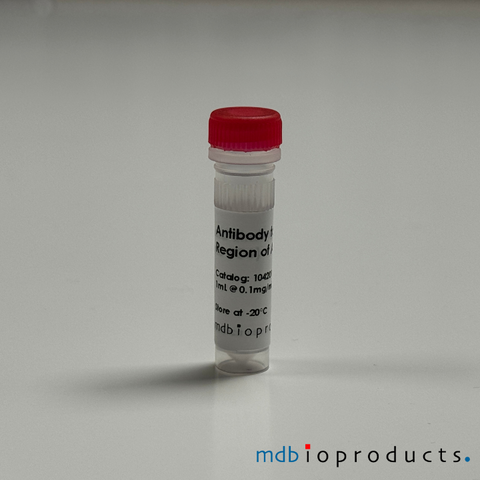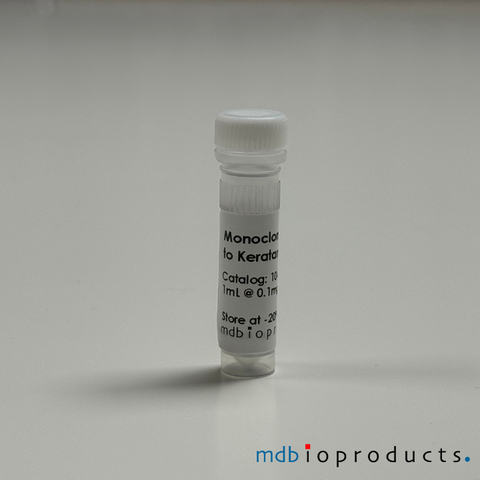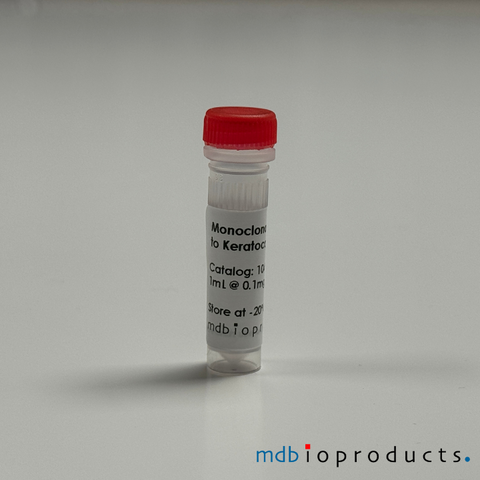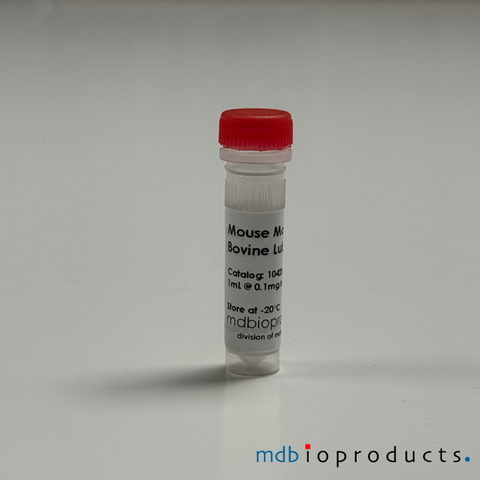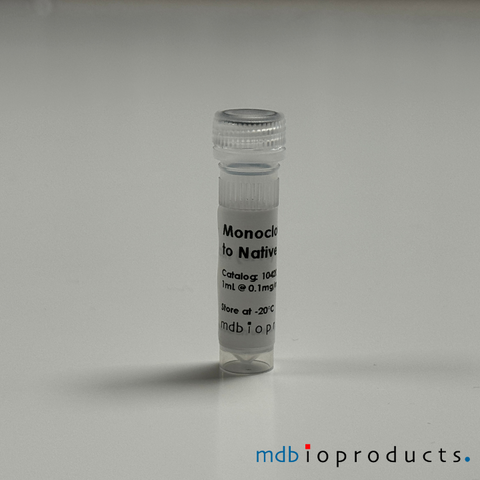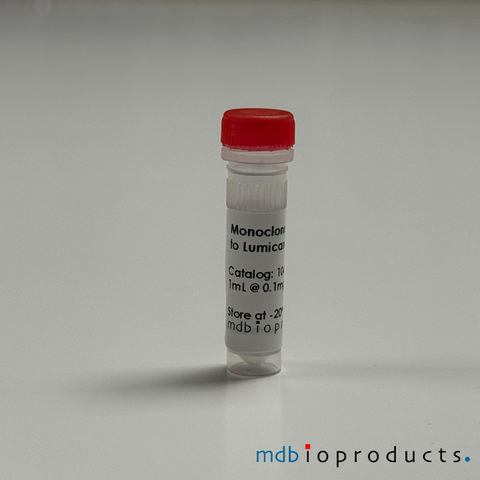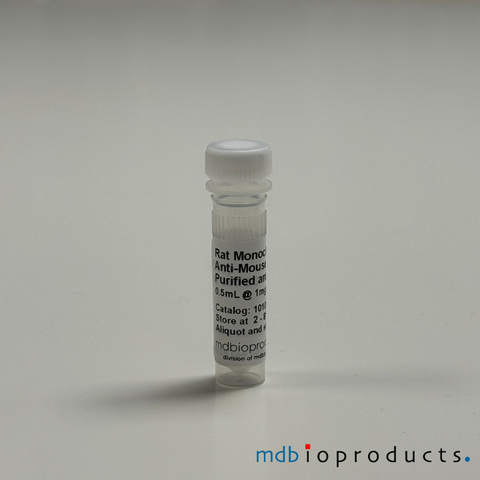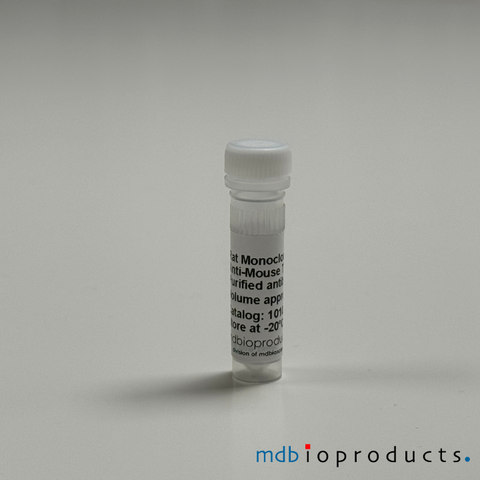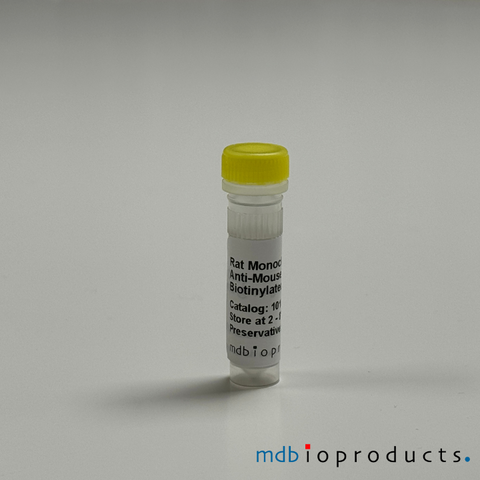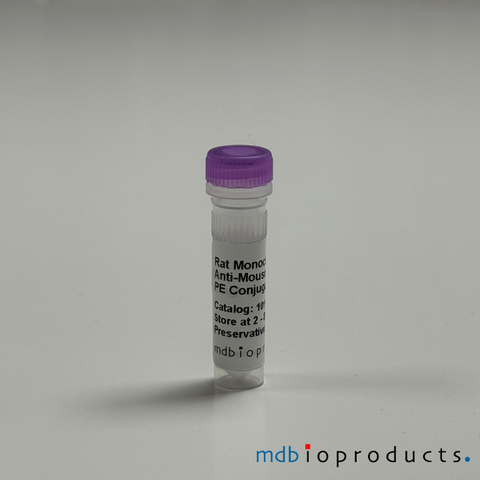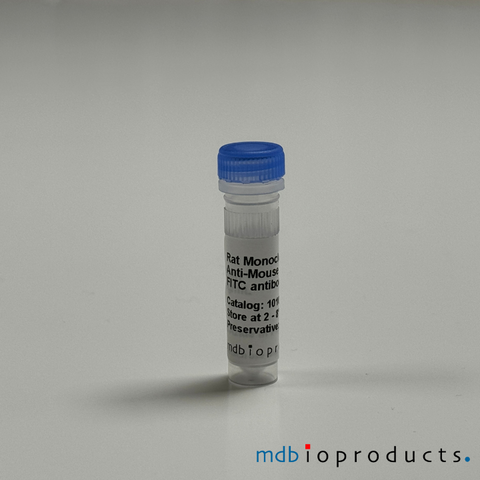Collagen Type I Antibody, anti-Mouse, 100 uL
Collagen type I polyclonal antibody (rabbit anti-mouse) purified from rabbits injected with type I collagen that was extracted/purified from mouse skin. Purified, freeze-dried antibody in a 0.1 mL vial. Type I...
Antibodies
203002-1
Collagen type I polyclonal antibody (rabbit anti-mouse) purified from rabbits injected with type I collagen that was extracted/purified from mouse skin. Purified, freeze-dried antibody in a 0.1 mL vial.
Type I collagen is the most abundant form of collagen in the human body and is synthesized mainly by fibroblasts, osteoblasts, odontoblasts and chondroblasts. It is located in the extracellular matrix of many tissues of the body including cartilage, bone, tendon, skin and the sclera of the eye. Type I collagen is composed of two pro-_1(I) chains, produced from the COL1A1 gene, and one pro-_2(I) chain, produced from the COL1A2 gene. Mutations in the genes that produce collagen type I are responsible for causing various health conditions including Ehlers-Danlos syndrome, osteogenesis imperfecta, osteoporosis and Caffey disease.
References/Citations:
Borza, C. M., Bolas, G., Bock, F., Zhang, X., Akabogu, F. C., Zhang, M. Z., ... & Pozzi, A. (2022). DDR1 contributes to kidney inflammation and fibrosis by promoting the phosphorylation of BCR and STAT3. JCI insight, 7(3).
Lu, C. L., Cain, J., Brudvig, J., Ortmeier, S., Boyadjiev, S. A., Weimer, J. M., & Kim, J. (2021). Collagen has a unique SEC24 preference for efficient export from the endoplasmic reticulum. bioRxiv.
Bota-Rabassedas, N., Guo, H. F., Banerjee, P., Chen, Y., Terajima, M., Yamauchi, M., & Kurie, J. M. (2020). Use of osteoblast-derived matrix to assess the influence of collagen modifications on cancer cells. Matrix Biology Plus, 8, 100047.
Saraswati, S., Lietman, C. D., Li, B., Mathew, S., Zent, R., & Young, P. P. (2020). Small proline-rich repeat 3 is a novel coordinator of PDGFRβ and integrin β1 crosstalk to augment proliferation and matrix synthesis by cardiac fibroblasts. The FASEB Journal.
Feng, Y., Li, M., Wang, S., Cong, W., Hu, G., Song, Y., ... & Zhang, Y. (2020). Paired box 6 inhibits cardiac fibroblast differentiation. Biochemical and Biophysical Research Communications, 528(3), 561-566.
Saraswati, S., Marrow, S. M., Watch, L. A., & Young, P. P. (2019). Identification of a pro-angiogenic functional role for FSP1-positive fibroblast subtype in wound healing. Nature Communications, 10(1), 1-16.
Nawaito, S. A., Sahadevan, P., Sahmi, F., Gaestel, M., Calderone, A., & Allen, B. G. (2019). Transcript levels for extracellular matrix proteins are altered in MK5-deficient cardiac ventricular fibroblasts. Journal of Molecular and Cellular Cardiology, 132, 164-177.
Pesevski, Z., Kvasilova, A., Stopkova, T., Nanka, O., Drobna Krejci, E., Buffinton, C., ... & Sedmera, D. (2018). Endocardial fibroelastosis is secondary to hemodynamic alterations in the chick embryonic model of hypoplastic left heart syndrome. Developmental Dynamics, 247(3), 509-520.
Surinkaew, S., Aflaki, M., Takawale, A., Chen, Y., Qi, X. Y., Gillis, M. A., ... & Nattel, S. (2018). Exchange protein activated by cyclic-adenosine monophosphate (Epac) regulates atrial fibroblast function and controls cardiac remodelling. Cardiovascular research, 115(1), 94-106.
Viquez, O. M., Yazlovitskaya, E. M., Tu, T., Mernaugh, G., Secades, P., McKee, K. K., ... & Gewin, L. C. (2017). Integrin alpha6 maintains the structural integrity of the kidney collecting system. Matrix Biology, 57, 244-257.
Feng, Y., Wang, S., Zhang, Y., & Xiao, H. (2017). Metformin attenuates renal fibrosis in both AMPK α2‐dependent and independent manners. Clinical and Experimental Pharmacology and Physiology, 44(6), 648-655.
Chen, X., & Thibeault, S. L. (2016). Cell–cell interaction between vocal fold fibroblasts and bone marrow mesenchymal stromal cells in three‐dimensional hyaluronan hydrogel. Journal of tissue engineering and regenerative medicine, 10(5), 437-446.
Dupuis, L. E., Doucette, L., Rice, A. K., Lancaster, A. E., Berger, M. G., Chakravarti, S., & Kern, C. B. (2016). Development of myotendinous‐like junctions that anchor cardiac valves requires fibromodulin and lumican. Developmental Dynamics, 245(10), 1029-1042.
Seet, L. F., Toh, L. Z., Finger, S. N., Chu, S. W., Stefanovic, B., & Wong, T. T. (2016). Valproic acid suppresses collagen by selective regulation of Smads in conjunctival fibrosis. Journal of Molecular Medicine, 94(3), 321-334.
Pankova, D., Chen, Y., Terajima, M., Schliekelman, M. J., Baird, B. N., Fahrenholtz, M., ... & Ahn, Y. H. (2016). Cancer-associated fibroblasts induce a collagen cross-link switch in tumor stroma. Molecular Cancer Research, 14(3), 287-295.
Neelisetty, S., Alford, C., Reynolds, K., Woodbury, L., Nlandu-khodo, S., Yang, H., ... & Gewin, L. (2015). Renal fibrosis is not reduced by blocking transforming growth factor-β signaling in matrix-producing interstitial cells. Kidney international, 88(3), 503-514.
Wang, H., Chen, X., Su, Y., Paueksakon, P., Hu, W., Zhang, M. Z., ... & Pozzi, A. (2015). p47phox contributes to albuminuria and kidney fibrosis in mice. Kidney international, 87(5), 948-962.
Singh, S. P., Tao, S., Fields, T. A., Webb, S., Harris, R. C., & Rao, R. (2015). Glycogen synthase kinase-3 inhibition attenuates fibroblast activation and development of fibrosis following renal ischemia-reperfusion in mice. Disease models & mechanisms, 8(8), 931-940.
Trombetta‐eSilva, J., Rosset, E. A., Hepfer, R. G., Wright, G. J., Baicu, C., Yao, H., & Bradshaw, A. D. (2015). Decreased Mechanical Strength and Collagen Content in SPARC‐Null Periodontal Ligament Is Reversed by Inhibition of Transglutaminase Activity. Journal of bone and mineral research, 30(10), 1914-1924.
Zhu, M., Tao, J., Vasievich, M. P., Wei, W., Zhu, G., Khoriaty, R. N., & Zhang, B. (2015). Neural tube opening and abnormal extraembryonic membrane development in SEC23A deficient mice. Scientific reports, 5, 15471.
Manley Jr, E., Perosky, J. E., Khoury, B. M., Reddy, A. B., Kozloff, K. M., & Alford, A. I. (2015). Thrombospondin-2 deficiency in growing mice alters bone collagen ultrastructure and leads to a brittle bone phenotype. Journal of Applied Physiology, 119(8), 872-881.
Sochman, J., Peregrin, J. H., Pavcnik, D., Uchida, B. T., Timmermans, H. A., Sedmera, D., ... & Rosch, J. (2014). Reverse endoventricular artificial obturator in tricuspid valve position. Experimental feasibility research study. Physiological research, 63(2), 157.
Bohuslavova, R., Kolar, F., Sedmera, D., Skvorova, L., Papousek, F., Neckar, J., & Pavlinkova, G. (2014). Partial deficiency of HIF-1α stimulates pathological cardiac changes in streptozotocin-induced diabetic mice. BMC endocrine disorders, 14(1), 11.
Chen, X., Wang, H., Liao, H. J., Hu, W., Gewin, L., Mernaugh, G., ... & Fässler, R. (2014). Integrin-mediated type II TGF-β receptor tyrosine dephosphorylation controls SMAD-dependent profibrotic signaling. The Journal of clinical investigation, 124(8), 3295-3310.
Zimmerman, K. A., Graham, L. V., Pallero, M. A., & Murphy-Ullrich, J. E. (2013). Calreticulin (CRT) regulates Transforming Growth Factor-β (TGF-β) stimulated extracellular matrix production. Journal of Biological Chemistry, jbc-M112.
Rosa, R. G., Akgul, Y., Joazeiro, P. P., & Mahendroo, M. (2012). Changes of large molecular weight hyaluronan and versican in the mouse pubic symphysis through pregnancy. Biology of reproduction, 86(2).
Baicu, C. F., Zhang, Y., Van Laer, A. O., Renaud, L., Zile, M. R., & Bradshaw, A. D. (2012). Effects of the absence of procollagen C-endopeptidase enhancer-2 on myocardial collagen accumulation in chronic pressure overload. American Journal of Physiology-Heart and Circulatory Physiology, 303(2), H234.
Dawson, K., Wu, C. T., Qi, X. Y., & Nattel, S. (2012). Congestive heart failure effects on atrial fibroblast phenotype: differences between freshly-isolated and cultured cells. PLoS One, 7(12), e52032.
Chen, J., Chen, J. K., Nagai, K., Plieth, D., Tan, M., Lee, T. C., ... & Harris, R. C. (2012). EGFR signaling promotes TGFβ-dependent renal fibrosis. Journal of the American Society of Nephrology, 23(2), 215-224.
Dagher, P. C., Mai, E. M., Hato, T., Lee, S. Y., Anderson, M. D., Karozos, S. C., ... & Sutton, T. A. (2011). The p53 inhibitor pifithrin-α can stimulate fibrosis in a rat model of ischemic acute kidney injury. American Journal of Physiology-Renal Physiology, 302(2), F284-F291.
Akins, M. L., Luby-Phelps, K., Bank, R. A., & Mahendroo, M. (2011). Cervical softening during pregnancy: regulated changes in collagen cross-linking and composition of matricellular proteins in the mouse. Biology of reproduction, 84(5), 1053-1062.
Harris, B. S., Zhang, Y., Card, L., Rivera, L. B., Brekken, R. A., & Bradshaw, A. D. (2011). SPARC regulates collagen interaction with cardiac fibroblast cell surfaces. American Journal of Physiology-Heart and Circulatory Physiology, 301(3), H841-H847.
Graham, L. V. D., Sweetwyne, M. T., Pallero, M. A., & Murphy-Ullrich, J. E. (2010). Intracellular calreticulin regulates multiple steps in fibrillar collagen expression, trafficking, and processing into the extracellular matrix. Journal of Biological Chemistry, 285(10), 7067-7078.
He, W., Wang, Y., Zhang, M. Z., You, L., Davis, L. S., Fan, H., ... & Hao, C. M. (2010). Sirt1 activation protects the mouse renal medulla from oxidative injury. The Journal of clinical investigation, 120(4), 1056-1068.
Cervical Softening During Pregnancy: Regulated Changes in Collagen Cross-Linking and Composition of Matricellular Proteins in the Mouse.Meredith L. Akins, Katherine Luby-Phelps, Ruud A. Bank, and Mala Mahendroo Biol Reprod, May 2011; 84: 1053 - 1062Intracellular Calreticulin Regulates Multiple Steps in Fibrillar Collagen Expression, Trafficking, and Processing into the Extracellular Matrix
Lauren Van Duyn Graham, et al. J. Biol. Chem., Mar 2010; 285: 7067 - 7078.Sirt1 activation protects the mouse renal medulla from oxidative injury.
He W, et al. J Clin Invest. 2010 Apr; 120(4):1056-68.Type XIV collagen regulates fibrillogenesis: premature collagen fibril growth and tissue dysfunction in null mice.
Ansorge HL, et al. J Biol Chem. Mar 2009; 284(13): 8427-38.SPARC Regulates Processing of Procollagen I and Collagen Fibrillogenesis in Dermal Fibroblasts
Tyler J. Rentz et al., J. Biol. Chem., Jul 2007; 282: 22062 - 22071.
The Calreticulin-Binding Sequence of Thrombospondin 1 Regulates Collagen Expression and Organization During Tissue Remodeling
Mariya T. Sweetwyne, Manuel A. Pallero, Ailing Lu, Lauren Van Duyn Graham, and Joanne E. Murphy-Ullrich
Am. J. Pathol., Oct 2010; 177: 1710 - 1724.
Product Insert (PDF) - Informational use only. Please refer to insert included with product.
Data/Specifications:
Format: Purified, freeze-dried antibody in 0.1 mL vial. Reconstitute with 0.1 mL distilled water and store aliquots at -20°C.
Specificity (% at 1:500 RIA dilution):
Mouse Collagen, Type I : 100%
Mouse Collagen, Types II, IV : < 0.1%
Mouse collagen type III: < 1.0%
Human, chicken, rat Collagen Type I: < 0.1%

